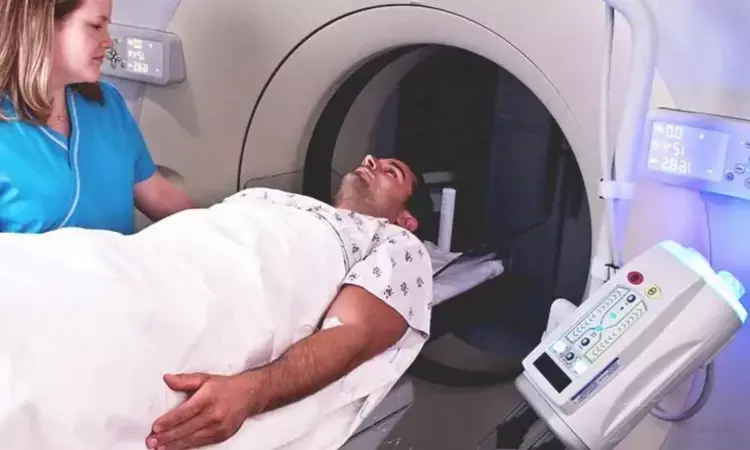- Home
- Medical news & Guidelines
- Anesthesiology
- Cardiology and CTVS
- Critical Care
- Dentistry
- Dermatology
- Diabetes and Endocrinology
- ENT
- Gastroenterology
- Medicine
- Nephrology
- Neurology
- Obstretics-Gynaecology
- Oncology
- Ophthalmology
- Orthopaedics
- Pediatrics-Neonatology
- Psychiatry
- Pulmonology
- Radiology
- Surgery
- Urology
- Laboratory Medicine
- Diet
- Nursing
- Paramedical
- Physiotherapy
- Health news
- Fact Check
- Bone Health Fact Check
- Brain Health Fact Check
- Cancer Related Fact Check
- Child Care Fact Check
- Dental and oral health fact check
- Diabetes and metabolic health fact check
- Diet and Nutrition Fact Check
- Eye and ENT Care Fact Check
- Fitness fact check
- Gut health fact check
- Heart health fact check
- Kidney health fact check
- Medical education fact check
- Men's health fact check
- Respiratory fact check
- Skin and hair care fact check
- Vaccine and Immunization fact check
- Women's health fact check
- AYUSH
- State News
- Andaman and Nicobar Islands
- Andhra Pradesh
- Arunachal Pradesh
- Assam
- Bihar
- Chandigarh
- Chattisgarh
- Dadra and Nagar Haveli
- Daman and Diu
- Delhi
- Goa
- Gujarat
- Haryana
- Himachal Pradesh
- Jammu & Kashmir
- Jharkhand
- Karnataka
- Kerala
- Ladakh
- Lakshadweep
- Madhya Pradesh
- Maharashtra
- Manipur
- Meghalaya
- Mizoram
- Nagaland
- Odisha
- Puducherry
- Punjab
- Rajasthan
- Sikkim
- Tamil Nadu
- Telangana
- Tripura
- Uttar Pradesh
- Uttrakhand
- West Bengal
- Medical Education
- Industry
Unenhanced CT less accurate than contrast-enhanced CT for diagnosing acute abdominal pain in ED: JAMA

USA: A multicenter diagnostic accuracy study showed unenhanced computed tomography (CT) to be 30% less accurate than contrast-enhanced CT for evaluating abdominal pain in the emergency department (ED).
"This should be balanced with the risk of intravenous contrast medium administration to patients with risk factors for hypersensitivity reaction or kidney injury," the researchers wrote in their study published in JAMA Surgery.
IV contrast medium is sometimes withheld in patients undergoing computed tomography for abdominal pain due to the lack of availability or risk of complications. The risk from withholding contrast medium is not being studied well. Therefore, Hiram Shaish, Columbia University, New York, New York, and colleagues aimed to determine the diagnostic accuracy of unenhanced abdominopelvic CT using contemporaneous contrast-enhanced CT as the reference standard in ED patients with acute abdominal pain.
The study included 201 consecutive adult ED patients who underwent dual-energy contrast-enhanced CT to evaluate acute abdominal pain. Three blinded radiologists interpreted these scans to establish the reference standard by majority rule. Then, IV and oral contrast media were digitally subtracted using dual-energy techniques. Six blinded radiologists from 3 institutions interpreted the resulting unenhanced CT examination. Participants included a consecutive sample of ED patients with abdominal pain who underwent dual-energy CT.
The study's primary outcome was the diagnostic accuracy of unenhanced CT for primary (main cause[s] of pain) and actionable secondary diagnoses (incidental findings requiring management). The Gwet interrater agreement coefficient was calculated.
The authors reported the following findings:
- There were 201 included patients (female, 108; male, 93) with a mean age of 50.1 years and a mean BMI of 25.5.
- The overall accuracy of unenhanced CT was 70% (faculty, 68% to 74%; residents, 69% to 70%).
- Faculty had higher accuracy than residents for primary diagnoses (82% vs 76%; adjusted odds ratio [OR], 1.83) but lower accuracy for actionable secondary diagnoses (87% vs 90%; OR, 0.57).
- This was because faculty made fewer false-negative primary diagnoses (38% vs 62%; OR, 0.23) but more false-positive actionable secondary diagnoses (63% vs 37%; OR, 2.11).
- False-negative (19%) and false-positive (14%) results were common. Interrater agreement for overall accuracy was moderate (Gwet agreement coefficient, 0.58).
"The use of unenhanced CT In a general population of emergency department patients with abdominal pain to avoid risks of intravenous contrast medium administration was linked with a large diagnostic penalty," the researchers conclude.
Reference:
Shaish H, Ream J, Huang C, et al. Diagnostic Accuracy of Unenhanced Computed Tomography for Evaluation of Acute Abdominal Pain in the Emergency Department. JAMA Surg. Published online May 03, 2023. doi:10.1001/jamasurg.2023.1112
Dr Kamal Kant Kohli-MBBS, DTCD- a chest specialist with more than 30 years of practice and a flair for writing clinical articles, Dr Kamal Kant Kohli joined Medical Dialogues as a Chief Editor of Medical News. Besides writing articles, as an editor, he proofreads and verifies all the medical content published on Medical Dialogues including those coming from journals, studies,medical conferences,guidelines etc. Email: drkohli@medicaldialogues.in. Contact no. 011-43720751


